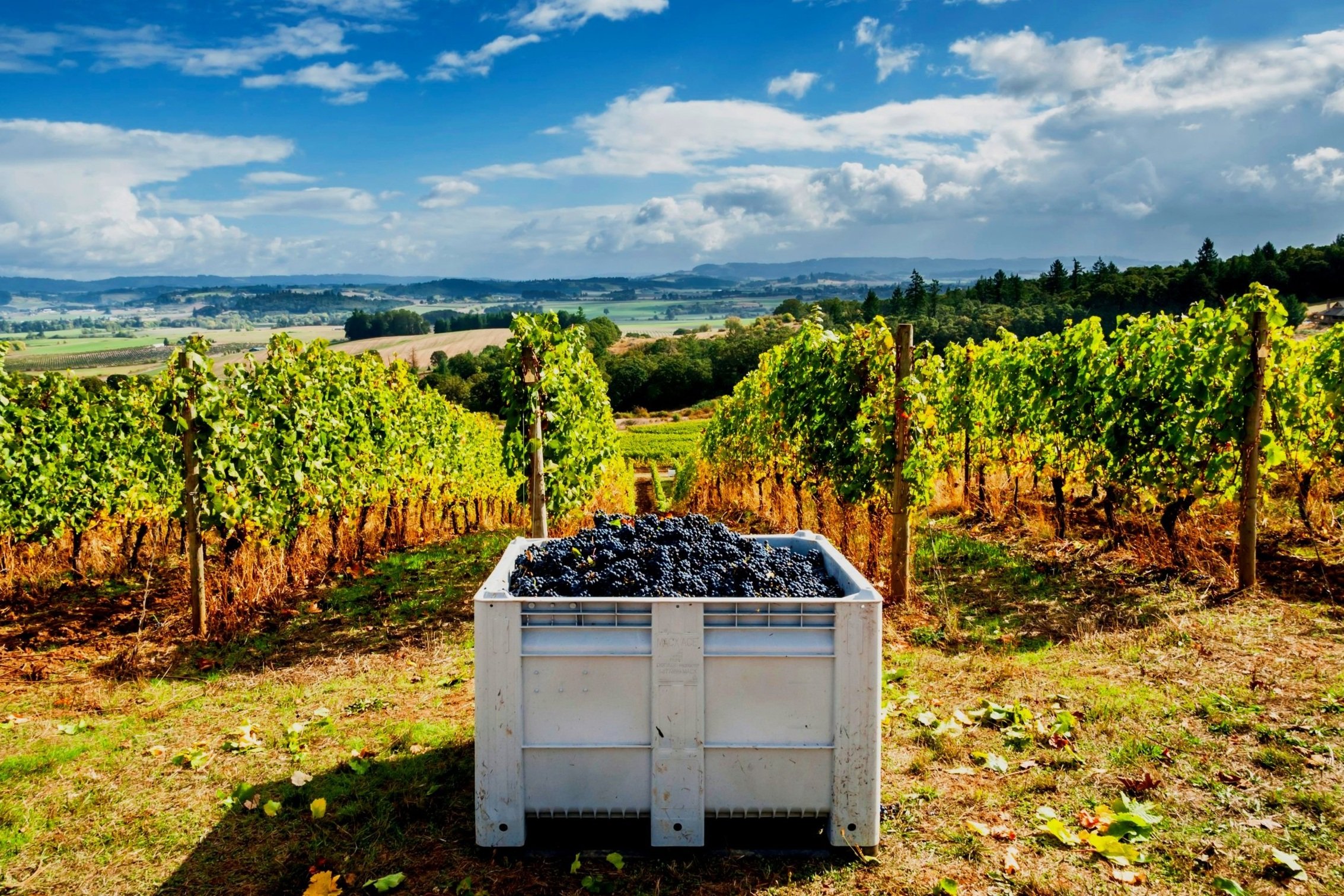
A Year in Biodynamics
Biodynamic vines by the month
Expand the boxes to the right to get a glimpse into what goes into 365 days of Biodynamic winemaking.
-
At the beginning of the month, the perimeter of the farm is sprayed with a special mix of herbs to mark boundaries, signal the intent for the year and give thanks to the life forces for the help. It is the start of pruning, which is not much different than conventional growers.
-
Additional pruning and tending to the compost to make sure it is developing appropriately.
-
Root activity is stimulated again as the soil warms. BD500, which is a tea of composted cow manure, is sprayed on the soil below the vines. We usually do two applications about two weeks apart but sometimes three if needed. If necessary, additional applications are used for younger vines and areas that need special attention.
-
Additional applications of compost are used as needed based on observation of bud break and new shoot growth. We also dig up the composted BD 500 from the previous fall and clean and store it for the next spring. Vine leaf sprays start at this time to enhance vine health and help fend off mildew. This is also a time when we do deep cultivation on every other vine row to break up soil compaction and let oxygen permeate the soil. This allows for the growth of the desired aerobic soil organisms. BD 501 silica spray is prepped for the following year.
-
Tasks include cultivation around the vines and the handwork of removing extra shoots.
-
This is a critical time when our vines bloom and we apply our first spray of BD 501. The timing of this is weather dependent and earlier sprays of BD 501 can help in cooler years. This is the time of the summer solstice when the vines are in peak growth and can take full advantage of the long days of sunlight.
-
The focus is on keeping the vines clean and healthy and the fruit developing. Depending on the weather and the character of the vine growth for that year we may need additional sprays of BD 501.
-
Much the same as July.
-
At this time of year, the vines are well on their way toward harvest. We start seeing color change and sugar development in the grapes. In cooler years this would be a time to apply valerian or even more BD 501 to try to accelerate color change and the process of ripening. This is when we prepare and start the composting of the BD 500.
-
This is harvest season in Oregon. We follow the Biodynamic calendar to harvest on the most favorable days when possible.
-
This is when we begin building our compost piles using a mix of pressed grape skins, collected leaves, straw and other plant materials and manure from our neighbor’s animals. Once the piles are built, we monitor the internal temperature to ensure they aren't getting too hot and killing off the beneficial organisms. Turning is necessary to bring air and cool off the piles. There is also a final flush of root activity when root hairs grow and the vines are storing nutrients for the following spring. Our fall soil sprays of BD 500 and the previous year’s compost are applied to the vineyards.
-
Once the compost piles have slowed down their initial burst of activity, we add the BD 502 through 507 preparations to the piles as "starter" substances to help in the production of the various nutritional components needed for healthy vine growth.

